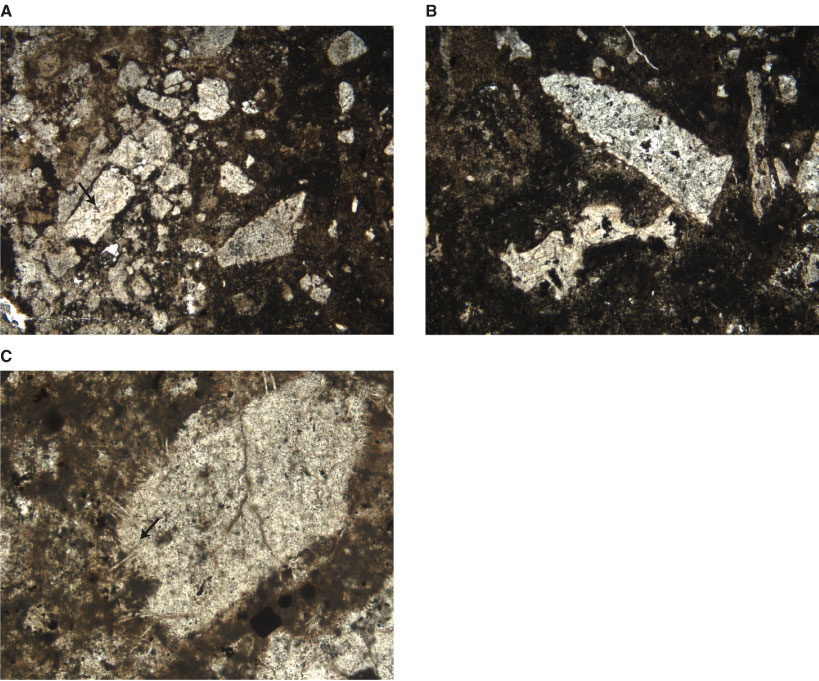Figure F34. Unit 51 has an apparently clastic texture in hand specimen (Fig. F27), which is defined by siliceous groundmass domains embedded in a dark gray apparent matrix enriched in clay minerals. Remnant plagioclase phenocrysts and microlites are in both types of groundmass (all photomicrograph images are from interval 193-1188F-30Z-1, 5-7 cm). A. The contact between a large, siliceous domain and a clay-rich domain with isolated siliceous apparent clasts is gradational. Arrow = altered plagioclase phenocryst (width of view = 5.5 mm. Photomicrograph ID# 1188F-B-46; thin section 91). B. The shapes of siliceous apparent clasts vary between angular and highly irregular (width of view = 2.75 mm. Photomicrograph ID# 1188F-B-47; thin section 91). C. Locally, plagioclase microlites are transgressing the boundary between apparent clasts and apparent groundmass (width of view = 0.70 mm. Photomicrograph ID# 1188F_48; thin section 91).

![]()